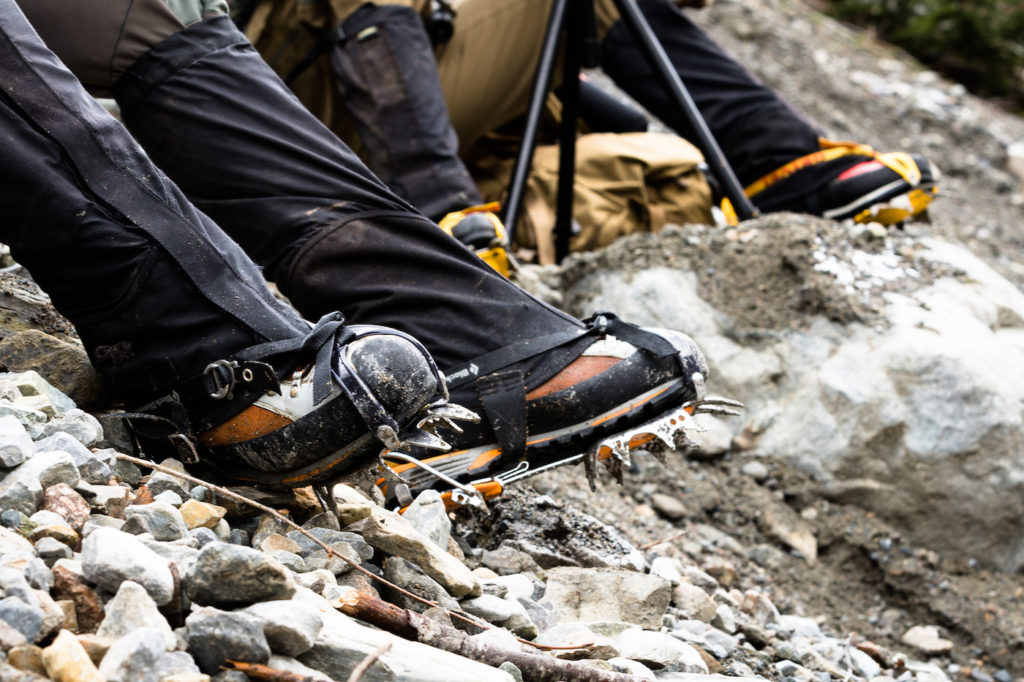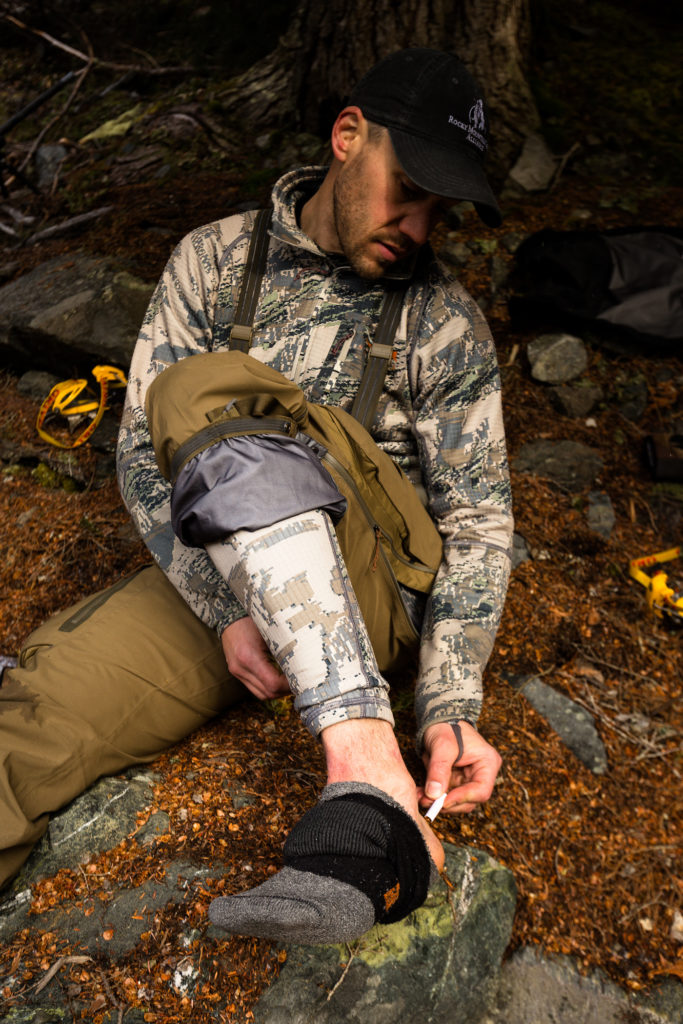All Photos Credit Steven Drake of Annuli Collective
In a perfect world, you won’t need the information contained within this article. If you’ve spent the appropriate time researching, testing and validating your boot and sock selection, you likely won’t have to contend with a blister or friction issue when you’d rather be hunting or scouting.
But shit happens. Unseasonable heat, extreme cold, moisture from countless stream or river crossings and longer than expected days on feet in rough country with weight on your back can create or expose boot related issues that weren’t identified in your pre-season preparation.
So, the question is, what are the go-to tools for dealing with a blister or friction related problem? There are countless pre-made blister management kits on the market today and in my opinion, most of these aren’t worth a fraction of their cost. It is entirely possible to build your own ultralight and ultra-affordable blister management kit without spending a ton of dough.
It should be noted that the best treatment is prevention and the mistake many hunters make—myself included—is to not stop and address the issue before it becomes a legitimate problem. I had to learn that lesson the hard way on more occasions than I’d care to admit and now know better. Most hard-charging mountain hunters will ignore the early signs of a blister or chafing site until it becomes painful enough that they have no choice but to deal with it. This is a losing proposition. Once the blister forms or you’ve chafed your skin to the point of being raw you’re fighting an uphill battle and your hunt will suffer for it, regardless of how much grit you have running through your veins.
If you start to feel a blister or chafing site develop anywhere around the feet or ankles STOP as soon as possible and use the tools recommended in this article to prevent, or at minimum, significantly slow the progression of the blister or chafing related issue. This alone will do more for you than anything else.
Now on to the ultralight kit contents. Please note that the recommended products in this article are based on a bare minimum (aka ultralight) approach to blister or friction management. Used appropriately, and assuming you follow the advice above to STOP and deal with the issue as soon as you identify it, these products should keep you in the hunt for the duration of your trip. If, however, you let the blister or chafing advance to the point of bursting or exposing raw skin the effectiveness of this ultralight kit will reduce significantly.
I have personally used each of these products across a variety of environmental conditions and use-case scenarios. From scouting, to hunting and training I can personally vouch for the effectiveness of this kit if used appropriately. No armchair quarterbacking here. These are field proven products.
The Ultralight DIY Blister Kit
1) Body Glide (or a similar product):
This is anti-blister/chafing balm that comes in a very small deodorant stick-like form. Using this preventatively in areas like the heels, in-between the toes or on the balls of the feet will significantly reduce the chances of a blister forming at all. Used on clean, dry skin with the appropriate socks it’s worth its weight in gold. From extreme heat to extreme cold I’ve used this product for years and it’s always in my med-kit.
2) Athletic Tape:
Athletic tape is as cheap and versatile as it gets. I’ve used it to address chafing and blistering on my heels or from wrapping my laces tightly around my ankles (something I like to do) and it’s invaluable when it comes to protecting an area where a blister has already formed like the heels or in-between the toes. Athletic tape is safe to use directly on the skin but does tend to lose its tackiness as sweat or moisture accumulates inside your boots. Which brings us to point number three.
3) Tincture of Benzoin:
This is a very lightweight and cheap product that is a game changer. I first used it on a Rocky Mountain goat hunt this past February when I started to develop heel blisters on both heels from an under-performing set of boots that I thought I’d tested appropriately before the trip. With the sub-zero temperatures we faced, the lacing system started to fail and my boots were far looser than they should have been, despite countless attempts to keep them tied tightly. Tincture of benzoin significantly improves the tackiness of any area where you need to apply tape or some other adhesive to act as a friction barrier. DO NOT use this on the blister itself, only on the skin around the blister so that the bandages or tape you apply stays stuck. On that goat hunt, I made the mistake of rushing my application of the tincture of benzoin on one heel and the difference between the two sides was remarkable. On the heel where I’d applied the product properly, my athletic tape stayed in place for the duration of the trip. On the other heel where I’d rushed the application, the tape had to be re-applied the next day. Proof enough for me. Make sure your skin is clean and dry before applying the tincture of benzoin and it will do wonders for your blister or chafing management.
4) Breathable Band-Aids:
This is an obvious recommendation. Make sure to pack a handful of both small and large Band-Aids so you can use the right size for the given problem. Toes, heels or ankles all require different shapes and sizes of adhesive bandages so find a product that breathes well and is moisture resistant and make sure they’re included in your med-kit. You can use the tincture of benzoin to improve the tackiness of the bandages as well. If you catch the blister or chafing issue before it’s a proper blister or raw skin, you don’t necessarily need to use an adhesive bandage. The athletic tape should suffice.



